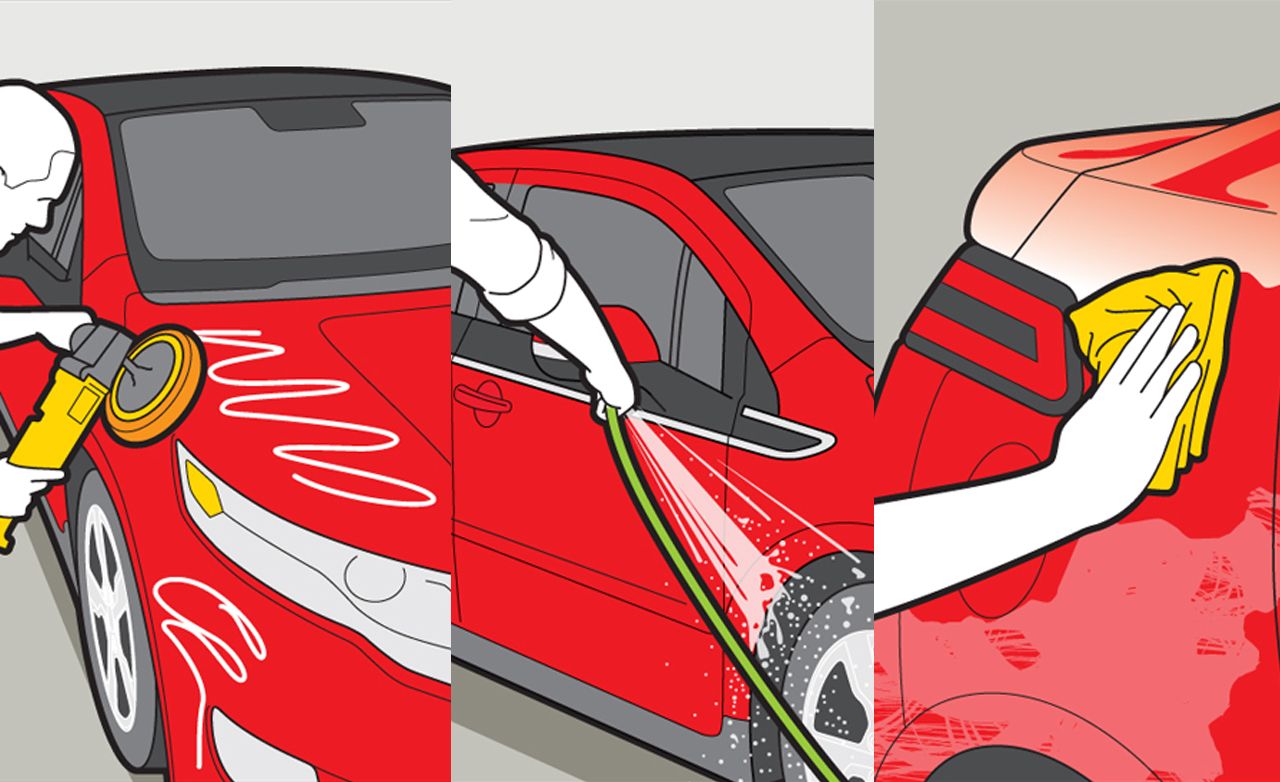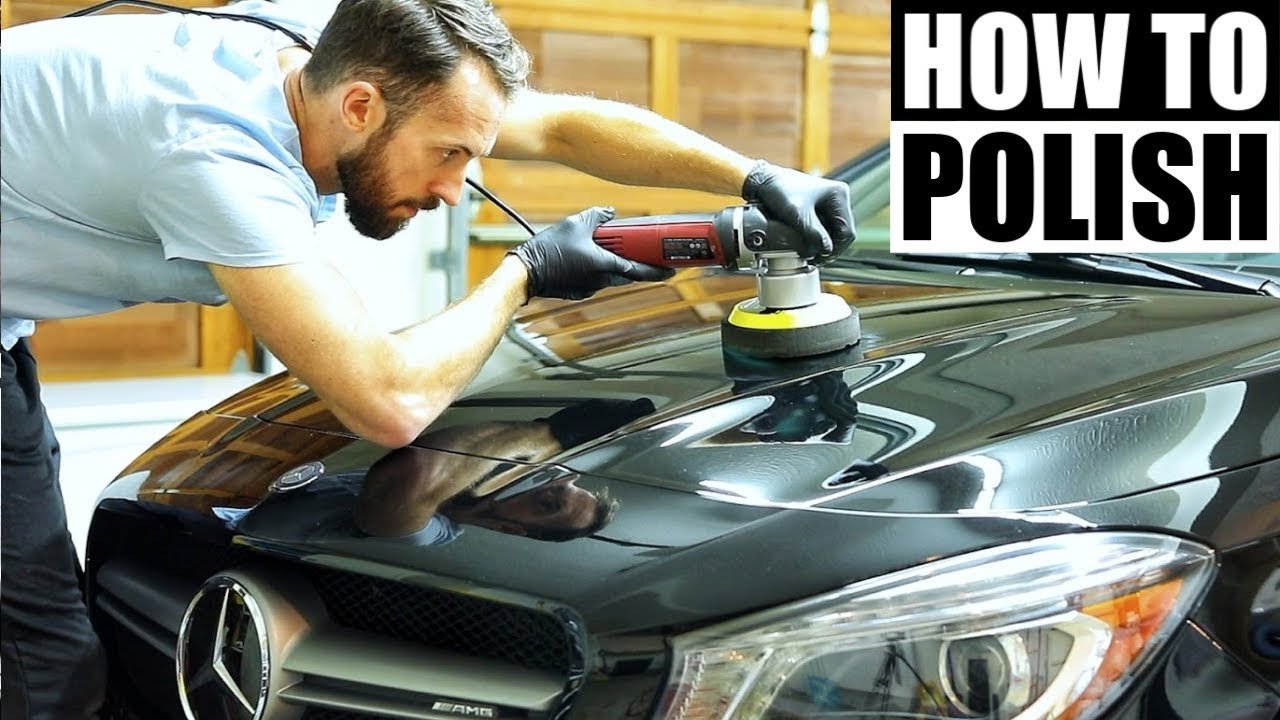Are you ready to transform your car’s dull, faded paint into a glossy, showroom-worthy finish? You’ve come to the right place.
Polishing your car isn’t just about aesthetics; it’s about preserving its value and protecting it from the elements. Imagine cruising down the road, turning heads as the sun reflects off your car’s mirror-like surface. Sounds appealing, right? In this guide, we’ll break down the process of how to polish a car into simple, manageable steps.
Whether you’re a car enthusiast or a first-time polisher, you’ll find tips and tricks to achieve that stunning shine. Let’s dive in and discover how you can make your car look its best!

Credit: www.turtlewax.co.uk
Choosing The Right Tools
Selecting the right tools is essential for polishing a car effectively. Consider using a quality buffer, microfiber cloths, and suitable polishing compounds. These tools ensure a smooth finish and protect the car’s paint.
Choosing the right tools for car polishing ensures a smooth finish. The right equipment and products make a significant difference. With the correct tools, the process becomes more efficient. You’ll achieve a polished, shiny surface with less effort. Let’s explore essential tools and products for effective car polishing.Essential Polishing Equipment
A dual-action polisher is a must-have. It offers control and prevents damage. Choose one with variable speed settings. Microfiber towels are essential for wiping off polish. They prevent scratches and leave a clean finish. Foam pads come in various grades. Use softer pads for a gentle polish. Harder pads remove deeper scratches. Always have a few extra on hand.Types Of Polish And Compounds
Polishes and compounds vary in abrasiveness. Light polish is for minor scratches and swirl marks. Medium polish removes more noticeable imperfections. Heavy compounds tackle deep scratches and oxidation. Always start with the least abrasive option. Test on a small area before applying widely. This prevents over-polishing and ensures the best result.Preparing The Car Surface
Preparing your car’s surface is the crucial first step to achieving a showroom-worthy shine. Without a clean and smooth base, polishing can lead to disappointing results, leaving scratches or uneven finishes. Have you ever wondered why some polished cars look flawless, while others don’t? The secret often lies in the preparation stage. Let’s dive into the essential steps to ready your car for that stunning polish.
Thorough Washing Techniques
Start by giving your car a comprehensive wash. Use a car-specific shampoo to avoid stripping the paint of its protective layers. A pressure washer can be a game-changer, helping to remove stubborn dirt and grime. Focus on every nook and cranny, ensuring all contaminants are gone.
Many people overlook the two-bucket method, which can prevent swirl marks. One bucket is for the soapy water, and the other for rinsing your mitt. This technique keeps dirt from scratching your car’s surface.
Clay Bar Application
Even after washing, your car’s surface can still harbor contaminants. A clay bar can make all the difference here. This step is vital for removing embedded dirt and other impurities that washing alone can’t handle.
Work in small sections, and always use a clay lubricant to prevent scratching. You’ll be surprised by how much smoother your car feels after this step. It’s like giving your vehicle a fresh start before polishing.
Masking And Protecting Trim
Protecting your car’s trim is often an overlooked step but can save you a lot of hassle. Use masking tape to cover areas like plastic trims and rubber seals. Polish can stain these surfaces, leading to a less-than-perfect finish.
If you’re short on time, focus on the areas with the most trim. This small investment in preparation can make the polishing process easier and more effective. Have you ever considered how much time you’ll save by not having to clean polish residue off your trim?
By focusing on these preparation techniques, you’re setting the stage for an exceptional polishing job. The time you spend here will pay off with a gleaming, scratch-free finish that turns heads. Are you ready to transform your car’s appearance?
Understanding Paint Types
Different paint types require specific techniques for polishing a car. Understanding these can prevent damage and enhance shine. Choose products suited for your car’s paint to ensure a smooth, glossy finish.
Understanding the type of paint on your car is crucial before you start polishing. Different paint types require different care, and using the wrong technique can lead to damage. Knowing what you’re working with helps you choose the right products and methods for a perfect polish.Single-stage Vs. Clear Coat
Cars usually have either a single-stage paint or a clear coat finish. Single-stage paint mixes the color and protective elements into one layer. This type is more common in older vehicles and can oxidize over time. In contrast, a clear coat is a transparent layer that sits over the colored paint, offering extra protection. Most modern cars have this type of finish. It provides a glossy look but also requires specific care to maintain its shine. Do you know what type of paint your car has? A simple way to find out is by rubbing a small spot with polish. If the color comes off on the cloth, it’s likely single-stage. No color? You’re probably dealing with a clear coat.Identifying Paint Imperfections
Before you start polishing, take a close look at your car’s paint. Identifying imperfections like swirl marks, scratches, or oxidation is the first step to addressing them. These issues can affect how you polish and what products you choose. Swirl marks often appear as tiny, circular scratches, usually from improper washing. Oxidation looks like a dull or chalky appearance on the paint surface. Both can be remedied with the right polish and technique. Have you ever noticed how light reflects off your car’s paint? This can help you see imperfections more clearly. Use this as a guide to focus your polishing efforts where they’re needed most. Understanding your car’s paint type and identifying imperfections can make all the difference. With this knowledge, you’re well-prepared to give your car the shine it deserves. Are you ready to take the next step in car care?
Credit: www.caranddriver.com
Polishing Techniques
Transform your car’s appearance with effective polishing techniques. Start by washing the car thoroughly to remove dirt. Next, use a high-quality polish in circular motions. Finally, buff to a shine with a microfiber cloth.
Polishing a car is an art that enhances its shine and can transform your vehicle from dull to dazzling. But did you know that how you polish your car can significantly impact the results? Understanding different polishing techniques can make a world of difference. Whether you’re hand polishing or using a machine, each method has its unique benefits and challenges. Let’s dive into these techniques to help you achieve that perfect mirror-like finish.Hand Polishing Vs. Machine Polishing
Hand polishing offers greater control and precision, especially useful for tight spots and small areas. It’s perfect for minor touch-ups and is less likely to damage the paint. However, it can be time-consuming and require more physical effort. Machine polishing, on the other hand, is efficient and covers large areas quickly. It delivers a consistent finish and can tackle stubborn blemishes with ease. But beware, improper use can damage the paint. Are you ready to trade muscle power for mechanical assistance?Correct Pad Selection
Choosing the right pad can make or break your polishing job. Soft foam pads are great for light polishing and finishing. They’re gentle on the paint and reduce the risk of scratches. For heavier jobs, use firmer pads. They can help eliminate deeper imperfections. However, they require careful handling to prevent damage. Have you considered the type of finish you want before selecting your pad?Proper Polishing Motions
The way you move the pad across the car’s surface matters. Use overlapping circular motions for even coverage. This ensures you don’t miss any spots and achieve a uniform shine. Avoid applying too much pressure. Let the pad and polish do the work. Excessive force can lead to swirl marks and uneven finishes. Do you think your technique might be affecting your results? Mastering these techniques can elevate your car polishing skills and deliver remarkable results. Whether you choose to polish by hand or machine, your approach determines the quality of the shine. Are you ready to put these insights into practice and see your car gleam like never before?Addressing Common Issues
Polishing a car can bring back its shine. But common issues can arise. Swirl marks, scratches, and oxidation can spoil the look. Knowing how to address these issues is key. It ensures your car looks its best.
Dealing With Swirl Marks
Swirl marks are tiny scratches. They often appear after washing. Using a soft microfiber cloth can help reduce them. Apply polish in a circular motion. This technique helps minimize marks. Choose a polish designed for swirl removal. It can make a big difference.
Removing Scratches
Scratches can be frustrating. Start by cleaning the area. Apply a scratch remover using a clean cloth. Rub in small circular motions. This helps fill in the scratch. Wax the area to protect the surface. Regular maintenance can prevent new scratches.
Handling Oxidation
Oxidation makes paint look dull. A clay bar can remove surface contaminants. It helps restore shine. Apply a suitable polish afterward. Buff with a clean cloth until you see results. Regular waxing keeps oxidation away. This gives your car a lasting shine.
Finishing Touches
You’ve washed and polished your car. Now, it’s time for the finishing touches. These steps enhance shine and protect your car’s surface.
Proper finishing makes your car look stunning. It also extends the life of the polish.
Applying Sealant Or Wax
Sealant or wax creates a protective barrier. It guards against dirt and UV rays. This helps maintain the polish longer.
Choose between synthetic sealant or natural wax. Synthetic sealants last longer. Natural wax offers a deep shine.
Apply the product evenly. Use a foam applicator pad for best results. Cover all areas for consistent protection.
Buffing For Extra Shine
Buffing enhances the shine of your car. Use a microfiber towel or a buffing machine.
Gently buff the surface in circular motions. This helps spread the wax evenly. It also removes any residue left behind.
Buffing brings out the true beauty of the polish. It adds a glossy finish that is hard to miss.
Maintenance Tips
Maintaining a polished car involves more than just occasional washing. Regular care keeps the shine intact and protects the vehicle’s surface from damage. These maintenance tips ensure your car remains dazzling.
Regular Cleaning Routines
Clean your car weekly to remove dirt. Dirt can scratch the surface. Use a soft cloth or sponge. Avoid abrasive materials that harm the paint. Rinse thoroughly with clean water. Dry with a microfiber towel to prevent water spots.
Apply wax every few months. Wax adds a protective layer. It enhances the car’s shine. Choose a high-quality wax for best results. Polish the car after waxing for a smooth finish.
Protective Measures Against Damage
Park in shaded areas to protect the paint. Sun exposure can fade the color. Use a car cover for added protection. Covers shield the car from dust and debris.
Check for scratches regularly. Repair minor scratches promptly. Use touch-up paint for small areas. This prevents further damage.
Apply paint sealant twice a year. Sealant offers extra protection. It prevents oxidation and keeps the car looking new.

Credit: www.jdpower.com
Frequently Asked Questions
What Tools Do You Need To Polish A Car?
To polish a car, you’ll need a dual-action polisher, polishing pads, and car polish. Additionally, microfiber cloths are essential for wiping off residue. Ensure you have safety gear like gloves and eye protection. These tools help achieve a smooth, shiny finish without damaging the paint.
How Often Should You Polish Your Car?
Polish your car every 6 to 12 months to maintain its shine. Regular polishing protects the paint and removes minor scratches. Frequent polishing might harm the paint, so avoid doing it too often. Assess your car’s condition to determine the ideal frequency.
Can Car Polishing Remove Scratches?
Car polishing can remove minor scratches and swirl marks. However, deep scratches require more advanced techniques or professional help. Polishing enhances the overall look and smoothness of the car’s surface. For best results, use the right polish and technique.
What Is The Difference Between Waxing And Polishing?
Polishing removes imperfections and enhances the paint’s shine. Waxing provides a protective layer over the polished surface. While polishing focuses on correcting, waxing aims to protect. Both processes contribute to a car’s overall appearance and longevity.
Conclusion
Polishing a car brings out its natural shine. A clean, glossy finish adds beauty. Regular polishing maintains the car’s look. It also protects the paint. Follow simple steps for best results. Use quality products for a smooth surface. Avoid rushing the process.
Take your time for a perfect finish. Practice makes polishing easier. Soon, you’ll enjoy the satisfaction of a gleaming car. Remember, a well-polished car turns heads on the road. Keep your car shining bright. Enjoy the ride with confidence and pride.

